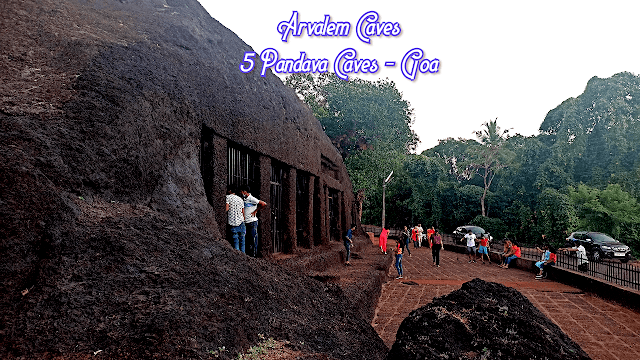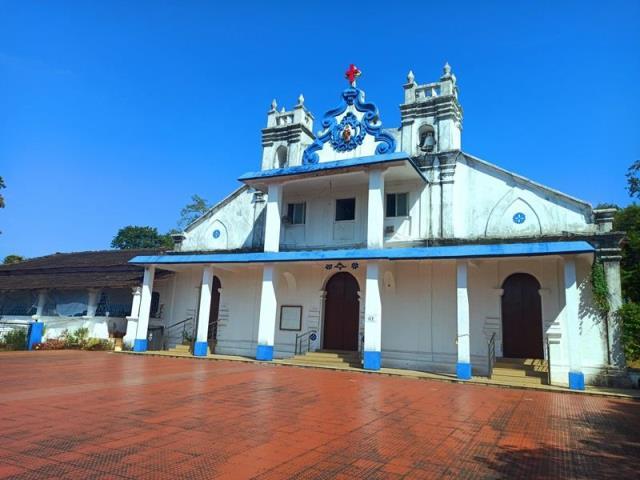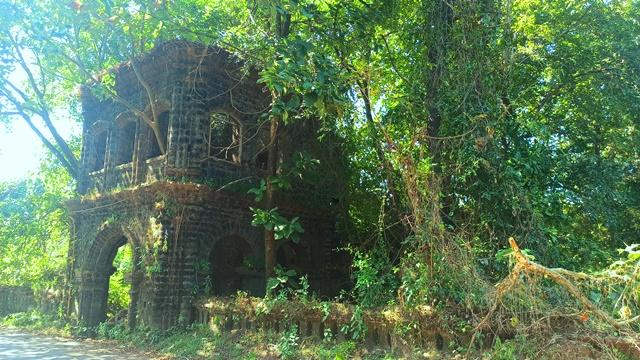
The Arvalem Caves – The Ancient Rock Cut Caves
The Arvalem Caves – The Ancient Rock Cut Caves
Goa is rich in history which extends very much before the arrival of the Portuguese in Goa. Moreover, Goa is also gifted with an abundance of natural beauty too.
The skills by these ancient people can be seen from the various monuments, structures, churches and houses that still exist in Goa.
It is a Perfect historical place to visit with your family or friends. Hence, it is considered as one of the less explored places in Goa. But surely extremely well maintained and protected under ASI.
Nothing much to see though since the caves are small. They are just beside the road, and it’s pretty much a straight route to it. Therefore, not much difficult to locate the place.
The view from here is awesome and very few people visit the place so you can enjoy peace and serenity, with mesmerizing history and nature.
Location
The Arvalem caves or the Pandava caves are located near Bicholim Taluka just nearby the Arvalem waterfalls. It is about 9 km from Bicholim, North Goa.
The distance from Panjim is about 29 km and from Vasco Da Gama railway station is 46 km.
It is on the way at the left side while going to temple from housing board Sanquelim.
The Arvalem Caves – The Ancient Rock Cut Caves
Brief History
The caves are believed to have been carved somewhere in the 6th century.
It is believed that the Pandava brothers – Yudhisthira, Bhima, Arjuna, Nakula and Sahadeva – from the epic of Mahabharatha lived here during their 12 years of exile!
It’s a rock-cut cave, Having 5 compartments. However, out of 5 compartments, 3 small compartments with Lingas are placed in each of them. These compartments are excavated into the laterite hill that consists of two major caves and a residential chamber.
The first phase of excavation includes triple shrines. The first cave of the triple shrine on the north-west side is a square chamber having Pitha in the centre. It is enshrined by a Linga like a shaft of schist stone provided in its visible top form as a disc, perhaps standing for a solar disc.
The rectangular part below the disc-top contains an inscription ‘Sambapuravasi Ravi’. Seems, a name of the donor in the early part of the 7th century A.D. characters. This indicates synchronization of Siva and Surya and matches with the name of the donor.
The central shrine is with a similar Pitha enshrined by a Linga. That is to say, with visible cylindrical top and square bottom which is similar to the early usage of Linga at Ellora Elephanta caves etc.
The 3 Shrines
The third shrine on the south-east side had a similar rock-cut Pitha also having a similar shaft with the inscription which assumes the form of a spearhead, a possible representation of Kartikeya.
It seems to be reasonable to assume the combination of Shiva, Kaumara (Kartikeya) and Surya cults displayed here in the same manner as the southern Pandyan caves.
During the second phase, the cave is provided by a pillared façade fairly well finished and contains a rock-cut laterite Pitha. In addition, in the centre of which is found a Linga shaft with the visible cylindrical part. Similarly, the Ling in the second cave is dedicated to the sun.
Apart from the above cave shrines, there is one more at the extreme corner of north-west with a similar Pitha enshrined by a Linga with an inscription on the shaft datable to the last quarter of the 6th century A.D. Brahmi characters.
However, some scholars speculate that the Caves have a Buddhist origin since excavations made nearby revealed a large statue of Mahaveer Gautama Buddha which dates back to the 4th century.
The excavated Buddha statue can be now witnessed in the Goa museum.
Further, the Buddhists often used caves for meditation, a tradition that was ultimately derived from the Buddha himself.
Timings
The timings to visit these caves are from 9:00 am to 1:00 pm in the morning and from 2:00 pm to 5:00 pm in the evening.




